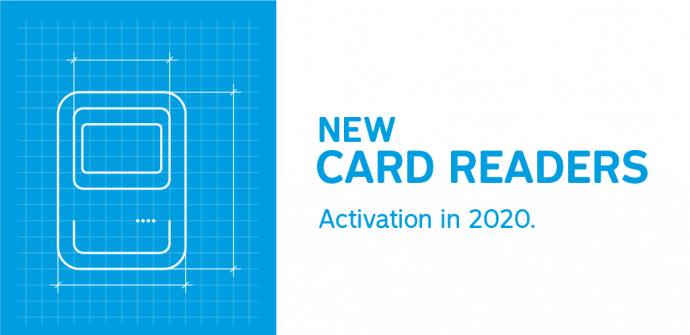The STM has begun gradually installing new validation equipment on its buses to improve boarding.
Over the past few weeks, the STM has begun gradually installing new validation equipment on its buses to improve boarding. As part of this $16.6-million project, existing card readers integrated into fare collection boxes are being replaced by a more efficient external model, and the same equipment are being added to the rear doors of articulated buses. The STM has acquired a total of 2727 card readers to cover the entire bus fleet, as well as maintenance and training needs.
Better flow and improved accessibility
The new equipment will speed up card reading, resulting in a better flow of customers aboard buses, and their installation at the rear doors of articulated buses will optimize all-door boarding. Universal accessibility will also be enhanced through a larger screen, improved audio function and an optimized location.
At first, only smart cards (OPUS, L'Occasionnelle) will be accepted. Once complete, the project will allow the migration of the system toward new technologies. Fare collection boxes currently on buses will continue to be used for cash fares and magnetic card validation, but their integrated card readers will be deactivated.
Planning in three phases
The project will be carried out in three major phases. The installation of the new card readers began a few weeks ago and will be go on in parallel of the other phases, as a pilot project will take place around March 2020 in which equipment on some buses will be put into service and tested in an operational context. Following this testing period, the equipment will gradually be put into service starting in spring 2020, with plans to activate the card readers on all buses before winter 2021.
To date, 25 buses are equipped with the new card readers, although they are not yet functional. The installation is focused in particular on articulated buses this summer, since this type of vehicle is less used by the STM during the summer period. Since the STM’s priority is to deliver service to its customers, the installation phase, which will extend over several months, has been planned so that the work is done when the buses are available in the garages.
Both the old and new equipment will be aboard buses for a few months. To avoid customer confusion, a sign will be clearly posted on the new equipment until it is put into service. There is no risk that customers will accidentally validate their fares, since the card readers will not yet be connected.
